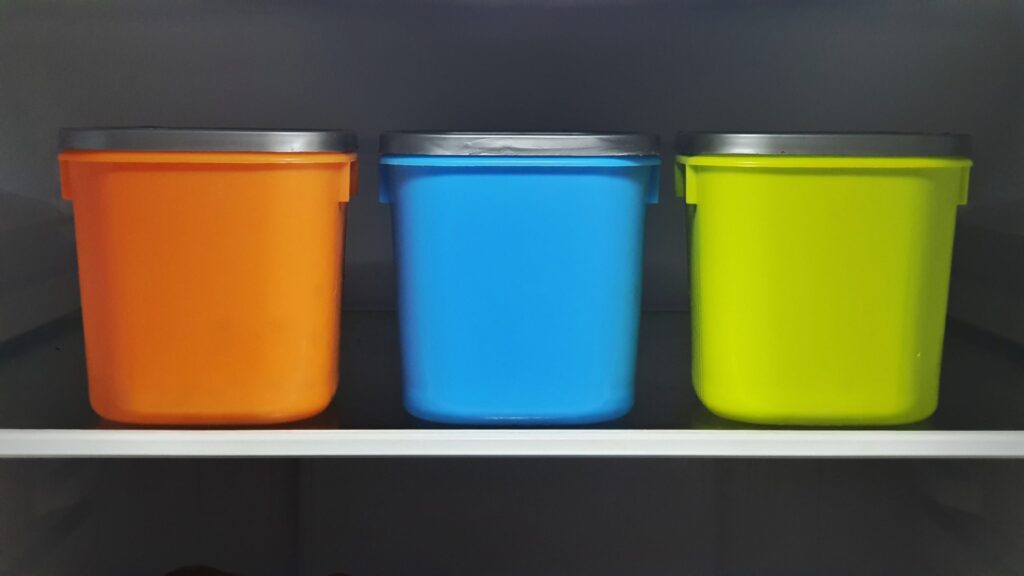Obesogens. I promise I am not making this word up! Most people have never even heard of them. And, they definitely don’t know why it should matter to them. But after today, that’s all about to change.
The term “Obesogen” was first coined in 2006 by Bruce Blumberg of the University of California, Irvine where he was studying the effects of common environmental chemicals such as fungicides, herbicides, pesticides and plastics on reproductive issues and how it affected future generations.
He found that pregnant rats exposed to high levels of these chemicals (Obesogens) had offspring with reproductive issues, but even more importantly, their offspring (great-grandchildren) were born with higher obesity rates. In fact, human studies have confirmed the link between BPA (plastic) exposure and obesity.1
Obesogens are chemicals that can cause obesity. They quite literally reprogram your cells by masquerading as naturally occurring hormones. This disrupts your endocrine system and causes fat storage, insulin resistance, and suppression of leptin (the fullness hormone).
Wondering how these chemicals even enter your body? You might be surprised to learn that there are toxins in places you haven’t thought about!
Obesogens are found in very common items – storage containers, cookware, cleaning supplies, toys, beauty products, and medical supplies.
Are you shocked? Frustrated? Rightly so! These things are toxic to the body, especially with long-term exposure that builds up. They can affect weight by altering your energy balance regulation in favor of weight gain.
More specifically, these chemicals mess with your hormones. Obesogens are called endocrine-disrupting chemicals (EDCs). The endocrine system plays a huge role in energy balance and fat storage, so disruptors can absolutely contribute to weight gain.
Obesogens can even change the way your body responds to hunger and decrease the calories you are able to burn.
Feeling like you are doing everything right but still can’t lose weight? You aren’t crazy! Obesogens may be part of the problem. Here are even more issues they can cause:
- Increased fat cells
- Changes in metabolism
- Imbalances in your gut microbiome that promotes storage of food
Obesogens are found in common household items. What chemicals are the main offenders? There are five!
BPAS
Think plastic! Specifically, BPAs are very often found in food storage containers made of plastic. There’s a good reason why you aren’t supposed to microwave plastic containers. When heated, BPAs are released from the plastic and enter your food.
BPAs mimic estradiol (a type of estrogen), so they bind to estrogen receptors and mess with your endocrine system.
Phthalates
Plastic again! They are used so plastics can be more durable and flexible. Phthalates are also found in beauty products like lotion, shampoo, makeup, nail polish, and perfume, as well as household products like soaps and detergents.
Phthalates bind to androgens (like testosterone) and can also affect the signaling in your cells for metabolism. They are linked to higher BMI.
Organotins
These are industrial compounds most commonly used in anti-fungal paint that is used on boats. You may initially think that probably doesn’t affect you but think again. These compounds leech into the water from the boat! As a result, many lakes and other bodies of water are contaminated with organotins.
These can increase fat cell formation and decrease muscle mass.
Atrazine
This is an herbicide that is used a lot in America. Because of this, it is often found in groundwater. It messes with both androgens and estrogens, reduces luteinizing hormone, and increases insulin resistance.
Perfluorooctanoic acid (PFOA)
This one can build up in your system and remain there for a long time – like decades! It is found in nonstick pans, nonstick kitchen appliances (air fryers, pressure cookers), waterproof clothing, stain repellent, food packaging, and even microwave foods. It is a possible carcinogen and causes is impaired metabolism.
Now that you know where obesogens are found and why they are so harmful, I’m sure you’re wondering how to escape them! Let’s talk about ways to limit exposure.
Limiting Exposure to Obesogens
1. Use metal or glass water bottles and glass food storage containers.
2. If you do use plastics, keep the following in mind:
- Buy BPA and phthalate free.
- Look at the number on the bottom! 3 or 7 may release BPA. Use 1, 2, 4, 5, or 6 instead.
- Never microwave plastic.
3. Pay attention to what you eat:
- Fresh or frozen fish instead of canned.
- Hormone and antibiotic free meat.
- Meat from the deli (we like Boar’s Head) or butcher instead of prepackaged.
4. Buy organic.
5. Replace nonstick pans with a Teflon free option – cast iron, stainless steel, and ceramic pots and pans are great alternatives.
6. Look at your products! Switch to non-toxic cleaning and beauty products.
It’s time to say goodbye to obesogens! Eliminating obesogens may be the final piece to your weight loss puzzle!
Quick Tips
Are you eating right and exercising but still not making progress in your weight? If so, check your exposure to obesogens. This may be the missing link!
Because obesogens are found in food packaging, cookware, groundwater, personal care products, cosmetics, and throughout our environment, we’re all getting exposed to them daily. What are a few easy swaps you can make to reduce your exposure?
